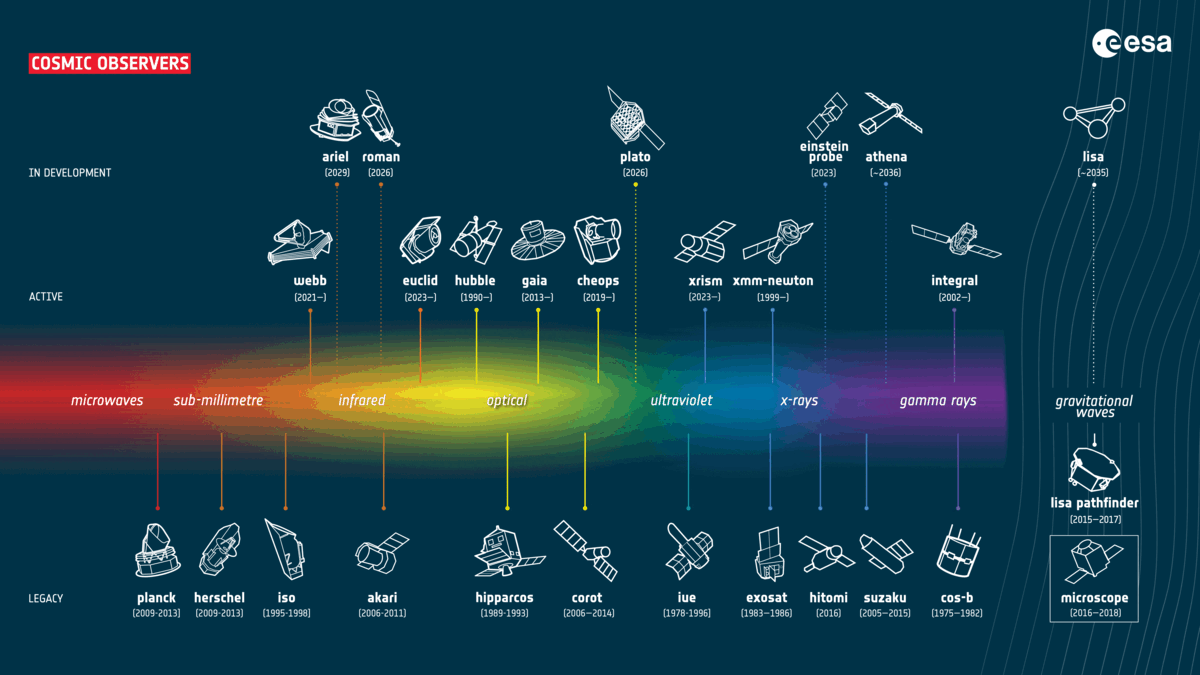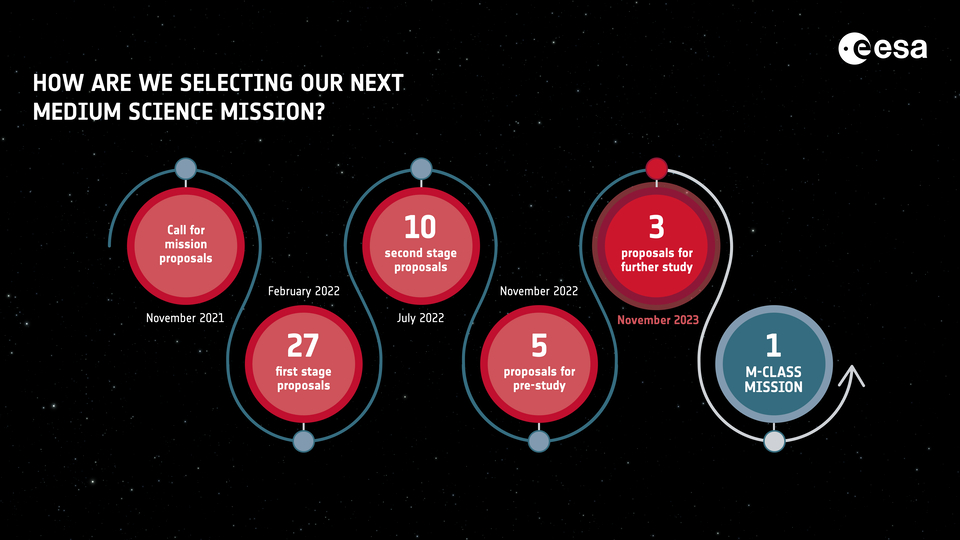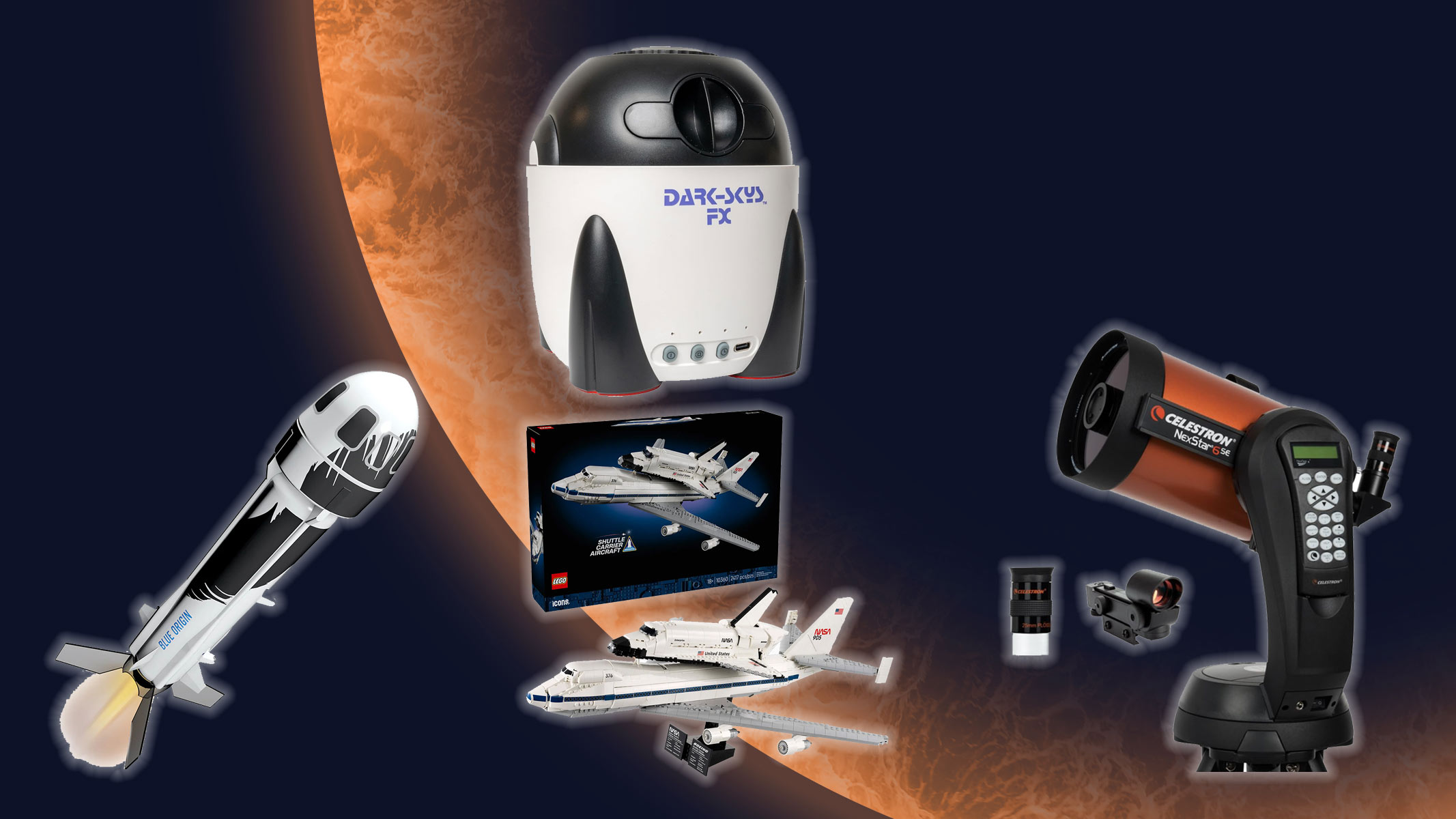Mars, Earth, or deep space? ESA narrows down finalists for a future space mission
Here are ESA's three finalists for its next medium-sized space mission.

The European Space Agency (ESA) has narrowed down proposals for a future medium-sized (M-class) mission.
On Wednesday (Nov. 8), the final three proposals were revealed to be M-Matisse, Plasma Observatory and Theseus, which have varying goals ranging from studying the effects of the solar winds on both Earth and Mars to examining high-energy blasts of radiation from far beyond the solar system.
The ESA called for these M-class proposals in 2021, and the launch of the winning mission is set provisionally for midway through the 2030s. A total of 27 proposals were submitted, which both ESA scientists and outside experts assessed. The missions were narrowed down to five proposals in Nov. 2022. Those then went through "Phase 0" studies between Jan. and Sept. 2023, during which time preliminary mission designs were drawn up and expected science returns were assessed.
Related: Mars orbiter spies a tiny Earth and moon from the Red Planet (photos)
Meet the M-class finalists!
A stereo view of Mars with M-Matisse
The M-Matisse mission proposes using two spacecraft with identical scientific instruments to study Mars simultaneously from two different locations.
The aim of this is to determine how the solar wind — streams of shared particles from the sun — affect the atmosphere of the Red Planet as well as its ionosphere and magnetosphere.
Understanding the impact of the solar wind on Mars' lower atmosphere and surface is key to determining how the Red Planet may have lost most of its atmosphere and water long ago. Such information could help us understand how Mars was once transformed from a wet and warm world like Earth to the cold, barren, and arid landscape we see today.
Breaking space news, the latest updates on rocket launches, skywatching events and more!
As such, M-Matisse could shed light on whether Mars was ever habitable — and, if so, when this habitability vanished during the planet’s 4.5-billion-year history.
Studying space around Earth with Plasma Observatory
Plasma Observatory is a proposal that would see seven spacecraft around Earth studying our planet's immediate space environment. If successful, this mission will specifically look at charged particles called plasma that surround our world.
This would allow operators of Plasma Observatory, and others in the scientific community, to answer two outstanding questions. Firstly, how are particles energized in space plasmas? And secondly, what processes determine how energy is stunted around Earth’s magnetic bubble, the magnetosphere? An offshoot of the latter would also be: How do layers of the magnetosphere interact with each other?
As such, Plasma Observatory would join current ESA missions that look at how the solar wind affects the Earth, which could help protect technology, and even space missions, stay safe from its harsher effects.
A view on the cosmic expanse with Theseus
The final candidate for a future M-class ESA mission sets its sights beyond Earth and Mars to concentrate on events outside the solar system. Theseus will focus on studying short-lived blasts of high-energy light, particularly what are known as "gamma-ray bursts."
This will include the investigation of short-duration gamma-ray bursts believed to be launched when ultra-dense stellar corpses, called neutron stars, collide and merge. Theseus will also study longer-lasting gamma-ray bursts that could be connected to the emergence of the first galaxies in the cosmos.
Informing a wide range of fields like astrophysics, stellar activity, and the physics of matter in the most turbulent and violent cosmic environments, Theseus could help answer lingering yet fundamental questions about the universe.
M-class winner will join a larger mission: NewAthena
To select which of the above missions will journey to space, the ESA’s Science Programme Committee now passes them to "Phase A," which will involve a period of detailed study to further assess the finalists' potential benefits.
The selected mission will join current M-class ESA projects including the Solar Orbiter, the "dark universe detective" Euclid Telescope and the Mars Express. It'll also operate alongside some forthcoming mid-sized missions set to launch within the next six years, Plato and Ariel.
In addition to narrowing down the proposed M-class missions to commission, on Wednesday (Nov. 8) the ESA also endorsed a reworked large-class (L-class) mission. The Athena mission was selected as a future ESA L-class project in 2014; its rescoped version, NewAthena, will observe the universe in X-rays to study the hot, energetic universe. This will have a major impact on high-energy astrophysics. Work is set to begin on NewAthena in 2027, with the mission's launch planned for 2037.
Soon, we will see which M-class mission will join NewAthena in development.
"We would like to congratulate all five proposals, each of which showed excellent promise to shed light on unanswered space science questions," Chair of the Science Programme Committee Cecilia Hernández of Agencia Espacial Española in Spain said. "We look forward to the many discoveries that will be made by the final selected mission."

Robert Lea is a science journalist in the U.K. whose articles have been published in Physics World, New Scientist, Astronomy Magazine, All About Space, Newsweek and ZME Science. He also writes about science communication for Elsevier and the European Journal of Physics. Rob holds a bachelor of science degree in physics and astronomy from the U.K.’s Open University. Follow him on Twitter @sciencef1rst.


